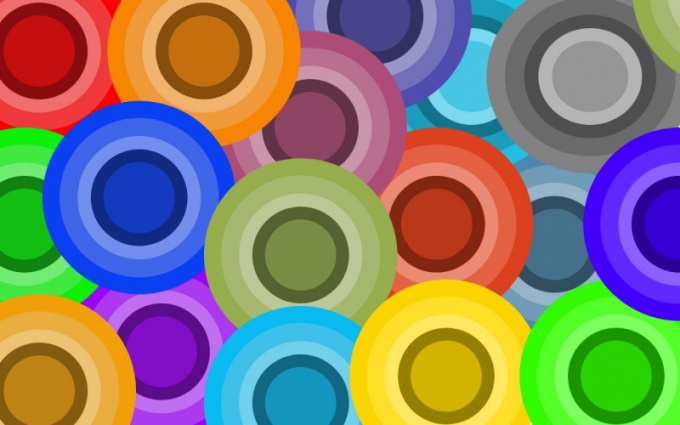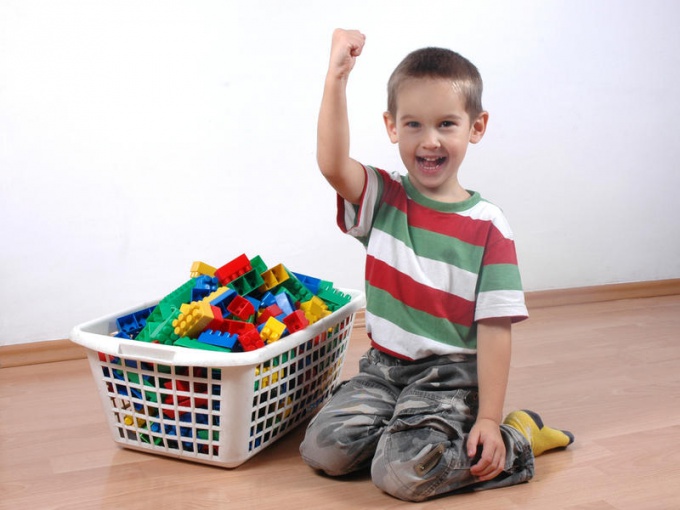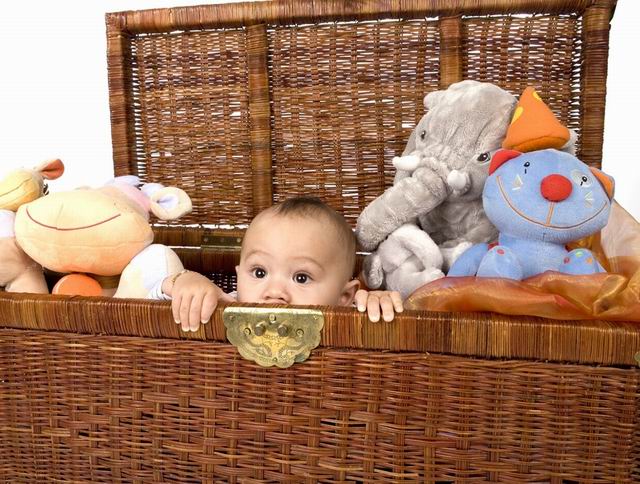Tip 1: How to Learn Colors with a Child
Tip 1: How to Learn Colors with a Child
From the first days of his life the child learnsto distinguish colors, in the beginning only the brightest. It is no accident that over his crib there appear red or bright yellow toys, which parents move from the center to the right and then to the left. The baby does not yet know how to play, but a bright subject attracts his attention. He follows his eyes, and soon stretches his hands. Purposeful work on the study of color begins with the year when the child can already manipulate objects and understand the speech of an adult.
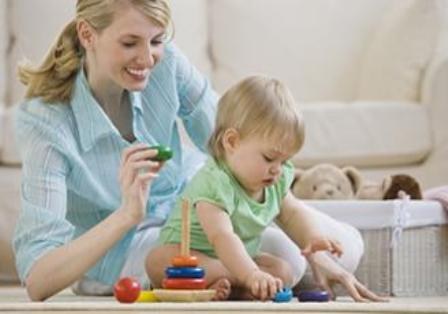
You will need
- - Pyramids with colored rings;
- - pairs of toys of the same color (doll and bow);
- - Unpaired toys of different colors;
- - gouache of primary colors.
Instructions
1
Collect a few toys of primary colors in a baby bucket. Giving the toys along with child from the bucket, lay them on the table according to the color scheme: red tomato, yellow banana, green cucumber, blue eggplant, white egg and black chocolate. Then put the toys back in a bucket. In this case, call the color of objects every time you pick it up.
2
Ask the child to get a yellow banana from the bucket. If the child can not cope with the task on his own, ask leading questions and find together the desired subject. Strengthen the knowledge of the child with praise, encouragement, allow yourself to experience joy, because the child wants to please you with his actions. He does not yet have a desire for self-development.
3
Offer the child to collect the pyramid, stringing rings of the same size and one colors on the rod. Having mastered the child this action, complicate the task: suggest stringing rings in a specific color sequence. In this case, the specimen should be in front of his eyes, or the adult accompanies the child's actions with the words: "First take the yellow ring, now red, etc.," seeking proper execution.
4
Sew the dolls simple monochrome clothes and separately bows of the same colors. For the ability to recognize objects of the same color range, the color of clothing can be: red and pink; yellow and orange; blue and purple. Invite the child to decorate the doll with a bow of the same colors, as the clothes. "Which bow is suitable for a red dress?". The doll refuses to take a bow if the color is picked up incorrectly.
5
Prepare gouache for drawing and suggesta child to draw or paint a picture using only one color. Such classes can be conducted daily, changing the color and plot of the picture: on a blue sheet a yellow sun is drawn; on the green - dandelions in the clearing; a green tree in a snow-white forest or a white snowman on a dark piece of paper.
6
Mix the two types of dye in the presence of the baby, show how the other colors. Such "miracles" are very popular with children, butlimit their actions by manipulation with only two colors, otherwise the miracle may not appear. Name what new color has appeared, if the child is not familiar with it. Draw something, fixing the name colors.
7
Show family members crafts and drawings of the child, inviting him to call or show the color you called. Emotional evaluation of close people will help to consolidate the study colors.
Tip 2: How to learn with a child geometric shapes
"We need to learn cheerfully to study well"is sung in a children's song. And preschoolers successfully acquire knowledge only in the game. And, so that the kid easily remembers the names of geometric figures, it is worthwhile to come up with interesting and useful entertainment that will help him in this.
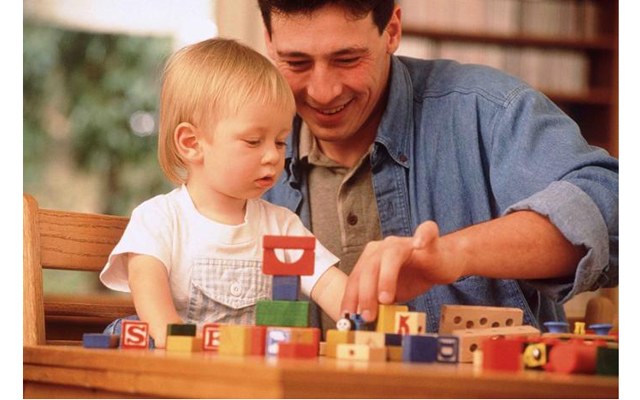
A joint game not only helps the child to know the world, but also brings the child and parents together psychologically.
We are getting acquainted!
Demonstrate the figures in their "natural" form(drawn or cut from paper), of course, it is possible and necessary. But it's much more fun to draw them while walking with a twig on the sand or snow, a finger on a misted tile or mirror while bathing in the bathroom, spread them out of what is near at hand (pebbles, buttons, ribbons). And you can sculpt figurines of plasticine or salted dough. In short, the more parents show their imagination, the more interesting the child will learn.Everything that surrounds us
To make the process of getting to knowgeometric figures are more laid-back, parents should pay attention to the baby's objects that surround him daily, while mentioning that the book, for example, is rectangular, the screen of the TV or monitor is square, and the plate is round. Multiple unobtrusive repetition will help the child with time to easily recognize this or that form. Gradually the child will be able to independently and on the instructions of an adult find objects whose outlines resemble a circle, rhombus, square, trapezoid. You can compete, who will find among the objects in the room 2-3-4-5 figures of one kind faster (and at the same time repeat the account).Colored figurines
From a multi-colored cardboard geometrical figures are made - on several different figures of each color.You can purchase a ready-made set of geometric shapes.The child is asked to choose only triangles,circles and so on. Figures can be not only of different colors, but also sizes. By the way, you can also repeat the colors and also study the concepts "more" and "less." When the child can easily cope with this task, the game can be complicated. For example, by selecting several squares and 1 triangle from a set of figures, offering the child to remove superfluous. And from these bright details you can get funny pictures that the kid will surely like to compose with his parents or independently. Good assistants in learning the basics of geometry will also be constructors, sorters , as well as developing computer games for kids.
Tip 3: Developing games: homemade mosaics
In the toy stores are sold a variety ofmosaic. This game develops intelligence, fine motor skills, artistic imagination. Therefore, the more the child has different mosaics, the better. To make such game it is possible from the most different materials. To do this, linoleum, colored cardboard and even bottles from lemonade are suitable.
